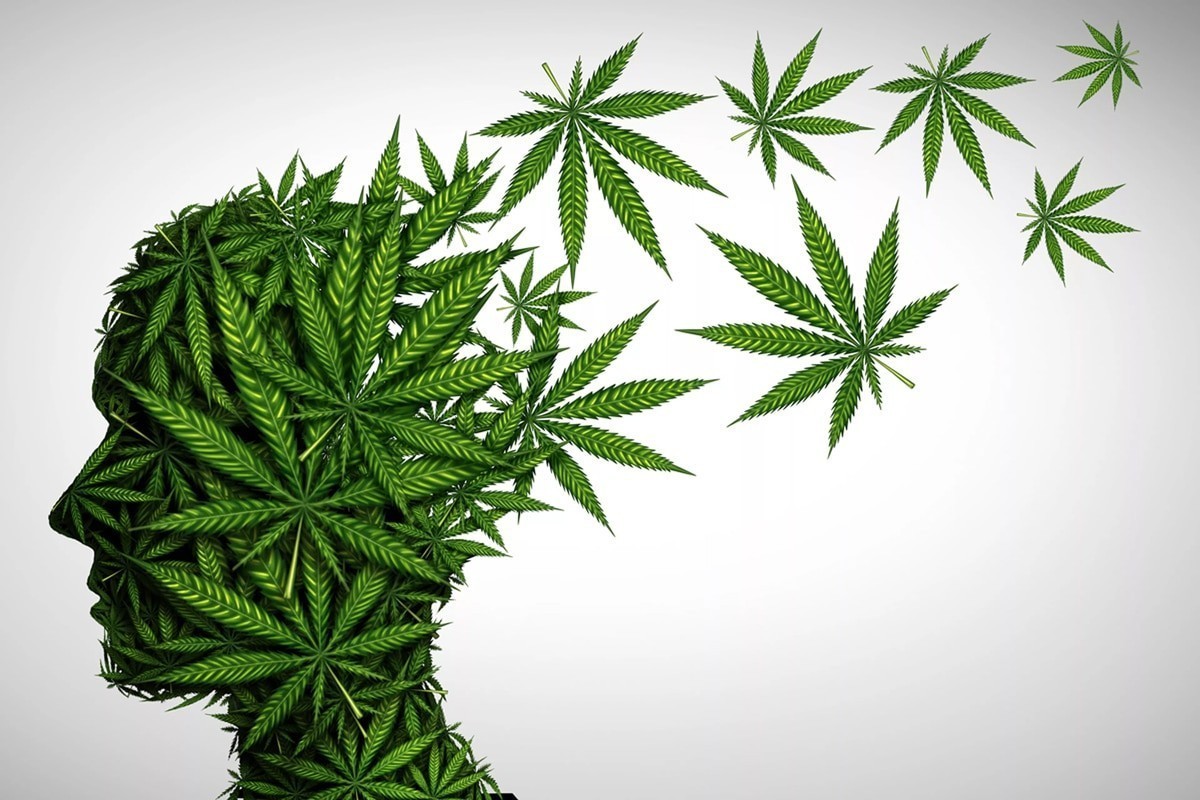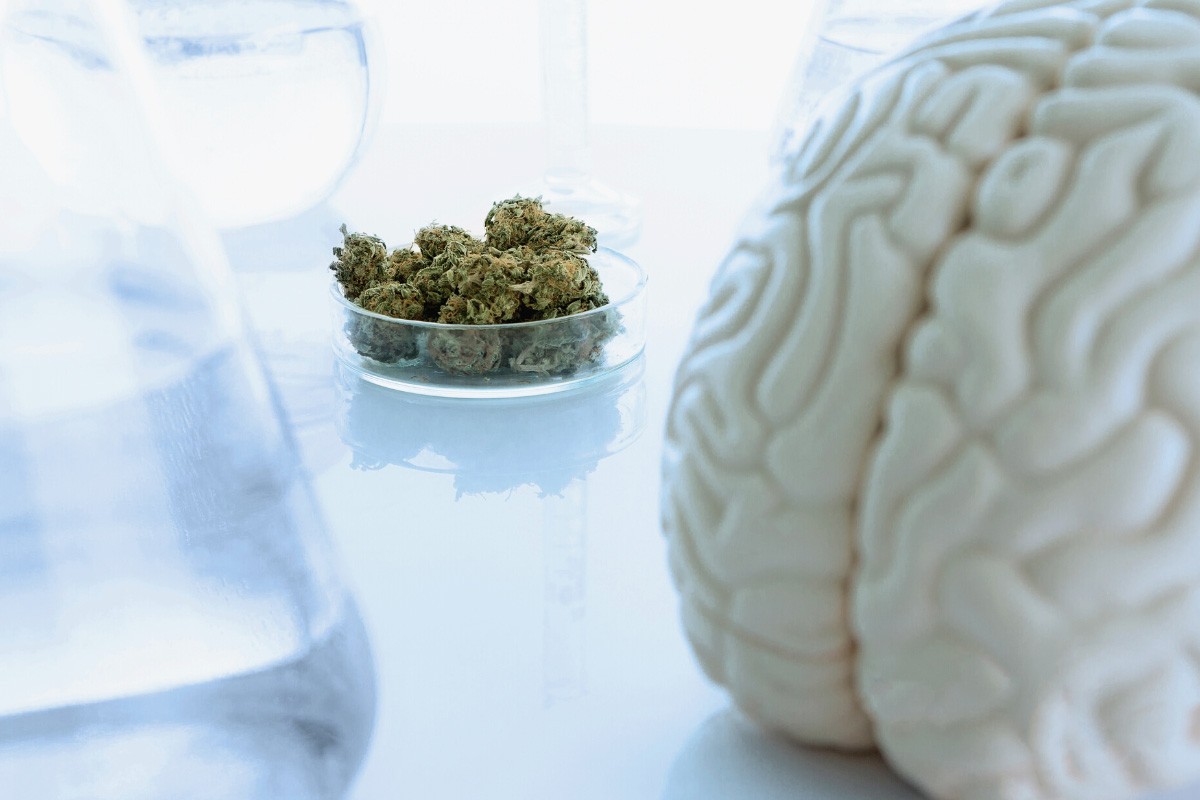In the mid-1960s, Israeli researchers Raphael Mechoulam and Yehiel Gaoni succeeded in identifying what is probably the most important active ingredient in cannabis: It was delta-9-tetrahydrocannabinol (THC). After this groundbreaking discovery, however, it would take another 20 years for scientists to figure out how THC could exert its effects in the body: Cannabinoids, of which THC is one, bind to certain receptors in the brain and thus trigger various processes in the body. Which processes these are depends primarily on which receptors are addressed.
In fact, the endocannabinoid system (also called the “endogenous cannabinoid system”), as part of the human nervous system, is involved in many functions in the body. The most important components of the system are on the one hand the cannabinoid receptors and on the other hand the cannabinoids / endocannabinoids, i.e. substances that bind to these receptors. Endogenous is the name of the system or the cannabinoids, because they are not supplied to the body from the outside, but are produced in the body itself.
What are cannabinoids?
Cannabinoids are certain chemical compounds found in the cannabis plant that can dock to certain receptors in the human body. These compounds can be found in plants such as cannabis (“phytocannabinoids”) as well as in the body itself. Substances that are similar in structure and effect to cannabis but are produced by the body itself (“endo”) are called endocannabinoids. Known endocannabinoids include arachidonylethanolamide (also called anandamide) and 2-arachidonylglycerol (2-AG).
To date, well over 100 cannabinoids have been identified, although the number of cannabinoids present in a plant can vary depending on the species. The best known cannabinoids are delta-9-tetrahydrocannabinol (THC) and cannabidiol (CBD). In addition, there are also synthetic cannabinoids that have been artificially produced in the laboratory and can have the same structure as phyto- and endocannabinoids. All cannabinoids have one thing in common: they bind to cannabinoid receptors, of which, however, there are different types.
Which cannabinoid receptors are there?
Basically, two types of cannabinoid receptors can be distinguished: CB1 and CB2 receptors.
CB1 receptors are mainly found in the nerve cells in the brain, especially in the cerebellum, basal ganglia and hippocampus. But they are also found in the peripheral nervous system, there especially in the intestine. CB1 receptors are acted upon by THC, the phytocannabinoid of the hemp plant, and the endocannabinoid anandamide. The most important functions of this type of receptor include the relief of pain and the stimulation of appetite. However, the regulation of learning and memory, anxiety, and depression may also be related to the activity of these receptors.
CB2 receptors, on the other hand, are found mainly on certain cells of the immune system and bones, but also in the gastrointestinal tract. Their main role is to inhibit (inhibit) inflammatory processes. In addition, they are involved in the regulation of immune performance and inflammation, as well as bone growth. Among others, the phytocannabinoid CBD and the endocannabinoid 2-arachidonylglycerol (2-AG) bind to CB2 receptors.
How the endocannabinoid system works
The endocannabinoid system works on the same principle as all receptor systems in the body: the receptors are a kind of lock or contact point that can only be opened or activated with the right key. In the case of the endocannabinoid system, the endocannabinoids and cannabinoids are the matching keys. We have them to thank for keeping our bodies in biochemical balance (homeostasis) and processing stimuli so that the body and brain can communicate with each other. Normally, the system works exclusively with endocannabinoids, which can bind to both types of receptors. The effect this has depends on where each receptor is located and which endocannabinoid docks with it.
However, phytocannabinoids also “match” the receptors and can activate them. Depending on which receptors the individual substances bind to, different effects occur in the body. It can be assumed that the characteristics of the receptors also play a role.
The endocannabinoid system works on the same principle as all receptor systems in the body: the receptors are a kind of lock or contact point that can only be opened or activated with the right key. In the case of the endocannabinoid system, the endocannabinoids and cannabinoids are the matching keys. We have them to thank for keeping our bodies in biochemical balance (homeostasis) and processing stimuli so that the body and brain can communicate with each other. Normally, the system works exclusively with endocannabinoids, which can bind to both types of receptors. The effect this has depends on where each receptor is located and which endocannabinoid docks with it.
However, phytocannabinoids also “match” the receptors and can activate them. Depending on which receptors the individual substances bind to, different effects occur in the body. It can be assumed that the characteristics of the receptors also play a role.
Once the endocannabinoids have fulfilled their function, they are broken down with the help of certain enzymes.
Once the endocannabinoids have fulfilled their function, they are broken down with the help of certain enzymes.
In which bodily functions is the endocannabinoid system involved?
The endocannabinoid system plays an important role in very different bodily functions, although the connections here have not yet been conclusively researched. However, it is known that the endocannabinoid system is involved in basic body functions such as the cardiovascular system, sleep or appetite, among others, and also plays an important role in immune function, pain perception and metabolism.
In addition, the system also has a major impact on a person’s mood and emotions. For example, it has been shown that the targeted blocking of CB1 receptors not only has an appetite-suppressing effect, but can also trigger strong feelings of anxiety. Other bodily functions related to the endocannabinoid system include motor functions and learning and memory processes. In addition, the system has an influence on the activation of various other neurotransmitters such as dopamine, GABA or glutamate.
All these bodily functions have in common that they contribute to homeostasis, i.e. the internal balance of the body. Some scientists suggest that maintaining this balance is even the main task of the endocannabinoid system. It is possible that low levels of endocannabinoids in the body may increase the risk of certain diseases such as migraine, fibromyalgia, and irritable bowel syndrome. These conditions have no clearly identified cause, are often difficult to treat, and in some cases occur together. However, a connection with endocannabinoids is so far only a theory, and there is still a great need for research in this area.








